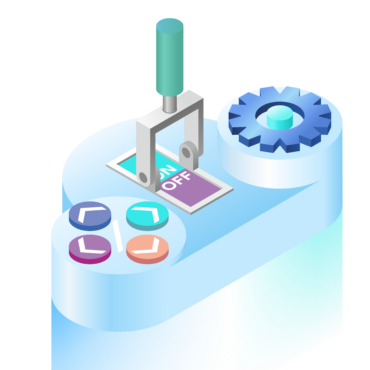Agile Development
Updated 30 Jan 2023
What is Agile Software Development?
The term “agile software development” describes a group of approaches and frameworks that support flexible planning, iterative development, and continuous delivery. Agile teams place a higher priority on working in small increments with frequent release cycles to produce value more quickly than they do on the final output or the finished product.
It’s an experience to design software. Additionally, it is unpredictable, like most adventures. Rapid iteration is at the core of the agile methodology because solutions develop naturally via cross-functional cooperation amongst self-organizing teams. Customer feedback is taken into account throughout the development process, ensuring future customer happiness.
Each business will implement agile in a unique way. Industry, functional discipline, and company culture are all relevant. Additionally, some groups merely favor one approach over another. Scrum is favored, for instance, by many software engineers. Kanban, on the other hand, may be preferred by IT teams managing lengthy lists of client requests or issues.
Agile principles, however, are useful to other functional areas within a business as well. Openness to change, confident teamwork, and customer-centered thinking are ideas that translate well to different kinds of work. Project management, product management, and content marketing may have all included agile process ideas.
This article aims to provide you with an overview of agile software development, including its history, evolution, and some of the difficulties that businesses have when putting it into practice.
History of Agile
Early in the 1990s, PC usage in businesses started to increase, but there were challenges with software development. Back then, this situation was known as the “application delivery lag” or “the application development crisis.” A confirmed business requirement and an actual application in production, as estimated at the time, would take three years. However, this is not how businesses operate. Even then, companies progressed more quickly than in three years.
Your company’s needs, processes, and even the entire operation might change in three years if it took three years to tackle the issues it faced. Due to this time crunch, corporations used to abandon several projects in the middle. Many initiatives also fell short of meeting the demands and standards.
Many sectors, including software, aerospace, and manufacturing, used to adhere to the waterfall methodology before agile. They would identify issues and try to develop a strategy to address them.
You must adhere to the plan established at the very beginning of your project if you use the waterfall methodology. That implies that, even if required, you cannot make any modifications along the route. Now, because a set plan may be uncomfortable, this caused a lot of chaos. In addition, even though it took years to complete, the waterfall method was all about releasing a finished product onto the market.
The waterfall methodology produced several issues for both the developer and the client. It would take years to find a solution, which would alter the nature of the issue.
Industries became frustrated with this approach.
Many software development teams started making plans for a new strategy in the 1990s. They used to discuss ways to expedite software development cycles so that they would reach the market sooner.
In a famed meeting, to provide a stronger answer for the development issues of the moment, 17 groups of developers continued their discussions. The Agile Manifesto, often known as the Agile Manifesto, was written by the agile team in a matter of days.
Following the inception of agile, several software development teams contributed to the technique throughout the 20s. We were exposed to several new methods, including “role-feature-reason,” “retrospective,” “rapid decisions,” and many more.
What is the Agile Methodology Process?
Popular software development methodologies like DevOps and continuous integration/continuous deployment (CI/CD) are built on agile software development frameworks like Scrum, Kanban, or extreme programming (XP).
Even while Scrum is now the most widely used agile framework, not all agile is Scrum and vice versa. Scrum is a project management methodology created for small, cross-functional teams of five to nine individuals that divide their work into manageable tasks that can be finished in a fixed amount of time, called a sprint. Team members, a Scrum master, and a product owner make up Scrum teams.
Scrum is typically used when a big project can be divided into 2- to 4-week sprints. Scrum emphasizes feedback loops via a ritual known as the “retrospective.” “Inspect and adapt” might be the unofficial Scrum slogan.
The agile manifesto predates other agile frameworks, particularly kanban. However, because they support the principles mentioned in the agile manifesto, these frameworks are seen as being agile.
What is Business Agility?
Business Agility is the capacity to flourish and compete in the digital era by swiftly responding to market changes and new opportunities with creative, technologically advanced business solutions. The digital era is characterized by rapid change. Today, everything moves at breakneck speed, including customer wants, competitive threats, technological options, corporate expectations, revenue potential, and worker demands.
Today, it takes consumer validation of innovations before “pivoting without compassion or guilt” when the hypothesis needs to shift in order to achieve customer happiness at the speed of market changes. Furthermore, substantial technology developments are opening up new avenues for producing this value. For instance, AI, Big Data, Cloud, and agile DevOps empower businesses to diversify their product portfolios, upgrade their current offers, scale to mass markets, make fact-based choices and speed up the creation of solutions.
What is Agile Testing?
A software testing approach known as “agile testing” adheres to this philosophy. Projects in Agile programming and development frequently change between collaborators and shareholders with each sprint. Agile testing is concerned with maintaining quality throughout the whole process of developing agile software.
Agile testing is vital in both continuous integration and continuous delivery. Developers merge their code changes into the common mainline multiple times each day using continuous integration. Every modification that successfully completes all tests is automatically delivered into production under continuous delivery. Agile teams may then swiftly incorporate customer feedback into their iterative product development processes.
Conclusion
Based on the concepts of Agile, there are several models and development processes. A rising number of businesses in recent years have credited the technique with their success. Agile has been embraced and commended for its effectiveness by some of the largest names in journalism, technology, finance, and even certain national government organizations.


